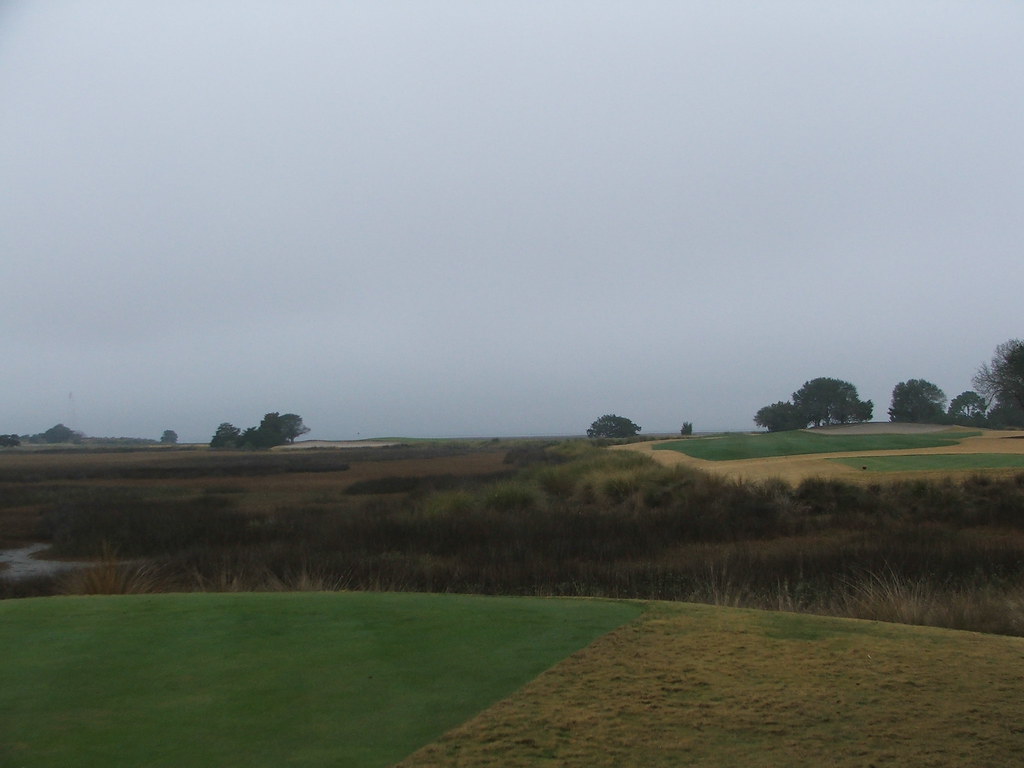Well, in my case it is Loch Lomond (ranked #56 in the world), located thirty miles north of Glasgow in Scotland. I have completed playing 23 of the 24 courses in the British Isles on the world top 100 list. Although most are private clubs, they follow long-standing tradition and allow visitors to book a round as long as you follow their rules and protocols. The Honourable Company of Edinburgh Golfers (Muirfield) is the second most difficult course to get on, just because they restrict tee times more than any other club. However, they do allow you to play without a member, as do all the others. Loch Lomond Golf Club is a very private affair. You must play with a member, and you cannot just ring up the club and book a round.
Organized in 1994, Loch Lomond was setup in the tradition of Augusta National or Pine Valley; it has an international membership and doesn't really serve as a local golf club in the traditional sense. In fact, Loch Lomond is constituted as a 'destination' club to be 'savored' only a few times a year. Membership is organized around specific geographic regions. The club has appointed specific 'Club Captains' to assume leadership and membership responsibilities for these geographic regions and ensure a particular geographic mix of members.
Loch Lomond has the most pompous approach I have ever seen to membership. They describe themselves as a "private and discerning international golf club." Their P.R. sounds a bit pious to me. They describe Loch Lomond as "a singular place to meet on the world stage...It is a sanctuary not just for golf aficionados but for world thinkers." What does that even mean? World thinkers? So it's the Davos of golf clubs? The U.N. of the links? Get a grip on yourselves, boys.
Also taken from their marketing literature, "Loch Lomond has a state-of-the-art, exceptionally amenitized spa in a walled garden." An exceptionally amenitized spa? What is an amenitized spa? Does that mean they put out a lot of fruit and little shampoo bottles the members can take home? I wonder if colon cleansing is included among the spa treatments? It sounds like some of the people that write the marketing pieces here need to have their pipes cleaned. Perhaps a bit of a high colonic will prevent them from abusing the English language like this. Their marketing piece is like something written by a chain-smoking, over-lipsticked, highly-caffeinated realtor in Nevada: adjectives gone wild. Their rhetoric borders on being as obnoxious as Donald Trump's. One gets the feeling that there are a lot of raised pinkies as they drink their cocktails at Loch Lomond.
Members of this high-minded include Nick Faldo, Ernie Els, Colin Montgomerie and His Royal Highness Prince Andrew. It also has an unusual feature that I have never heard of before. They limit the amount of play that members may have. Most clubs have a limit on guest play, but I've never heard of limiting member play. Members are limited to playing the course no more than fourteen times in any given year. The guest policy is, by definition, restricted since you have to play with a member.

Rossdhu House at Loch Lomond
Although the club is very exclusive, the course is known to the public because each year, the week before the Open Championship, the Scottish Open is played here. This allows outsiders a peek at what has been called the most beautiful setting in the world. Their clubhouse, Rossdhu House, is an 18th century Georgian mansion, and serves as a focal point in the scenery with the loch and the mountains in the background. It looks very special indeed.
Apparently, their approach to running a golf club hasn't work out as planned. They went into receivership in late 2008, making it more difficult for me to play the course. I've known two members over the years but both dropped out due to the increasingly high dues and the restrictions. I was offered a chance to play recently, but I guess they are so desperate for revenue that they're trying to soak anybody that comes near the place. I'm sorry, but a £600 guest green fee is just wrong. This highfalutin, haughty approach is an outrage.
In this era of de-leveraging, the Loch Lomond Golf Club model is coming apart at the seams. How many people can now afford the hundreds of thousands of dollars required to join a vanity club like this?
I take their bombastic approach to things as a challenge to be overcome, which I accept with pleasure. I have done this twice previously and this one should be easier since there is no language barrier like there was when I tried to book a tee time at France's Morfontaine and Japan's Hirono.
I am now singularly focused on getting onto Loch Lomond and I will keep you appraised of my developments.
Maybe this would be a good time to break out some of that "In Residence at the Lodge" letterhead I picked up at Sea Island and write them a letter. Perhaps they will be impressed. I'm working on some florid language of my own to approach the club with.
I'm also dusting off my recording equipment and am about to make some calls...
















